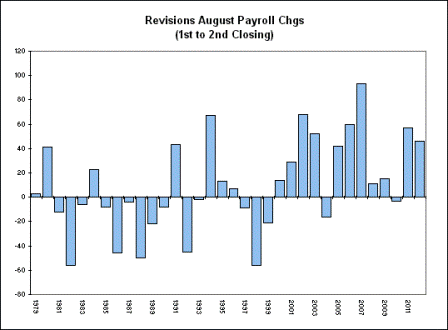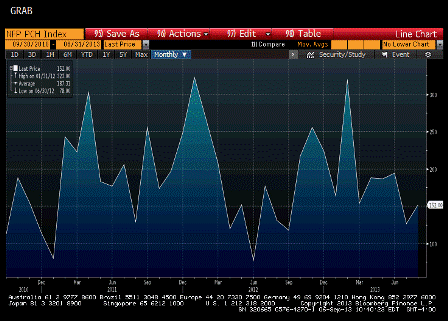FYI, from Merrill:
Cliff notes Forgotten, but not over The sequester may be forgotten, but it’s not over. Contrary to popular belief, it appears that most of the impact on growth comes in 3Q, not 2Q. This is one reason our tracking model is pegging growth this quarter at just 1.6%. The Federal workforce is shrinking Federal payrolls have been shrinking since the first half of 2011, but the pace has picked up since the beginning of this year. This reflects some layoffs, but mainly hiring freezes, natural attrition and presumably some workers balking at accepting the shift to part-time employment. Thus, the sequester simply is accelerating a drop that was already in progress. Government wages are falling Aggregate income of government workers has been falling since the end of last year. This reflects not just the drop in employment, but recently reduced hours from the furloughs. In particular, the Department of Defense began furloughing 640k employees on July 8. Doing the math, cutting work by two days a month would cause income to drop by $6.5 bn at an annual rate. That alone could explain the 0.5% drop in government wages and salaries July, which was the biggest mom decline since February 1993. Sequester’s impact is not evenly spread Surveys suggest that most Americans feel unaffected by the sequester. However, regions with heavy concentrations of federal workers or government contractors are feeling the pain. Even as the national unemployment rate continues to drop, there has been a notable pick-up in unemployment in Maryland and Virginia since hitting cyclical lows in April. Anecdotal evidence suggests more pain is on the way The latest Fed Beige Book suggests more pain in the pipeline. In the September 4 edition, there were nine references to sequester or sequestration versus only one reference in the July release. Defense firms in the Kansas City and San Francisco districts reported “that the effects of the sequestration have already been passed through to actual reductions in production.” Meanwhile, defense firms in the Boston region were concerned “about the prospect of larger effects in the fourth quarter.”



